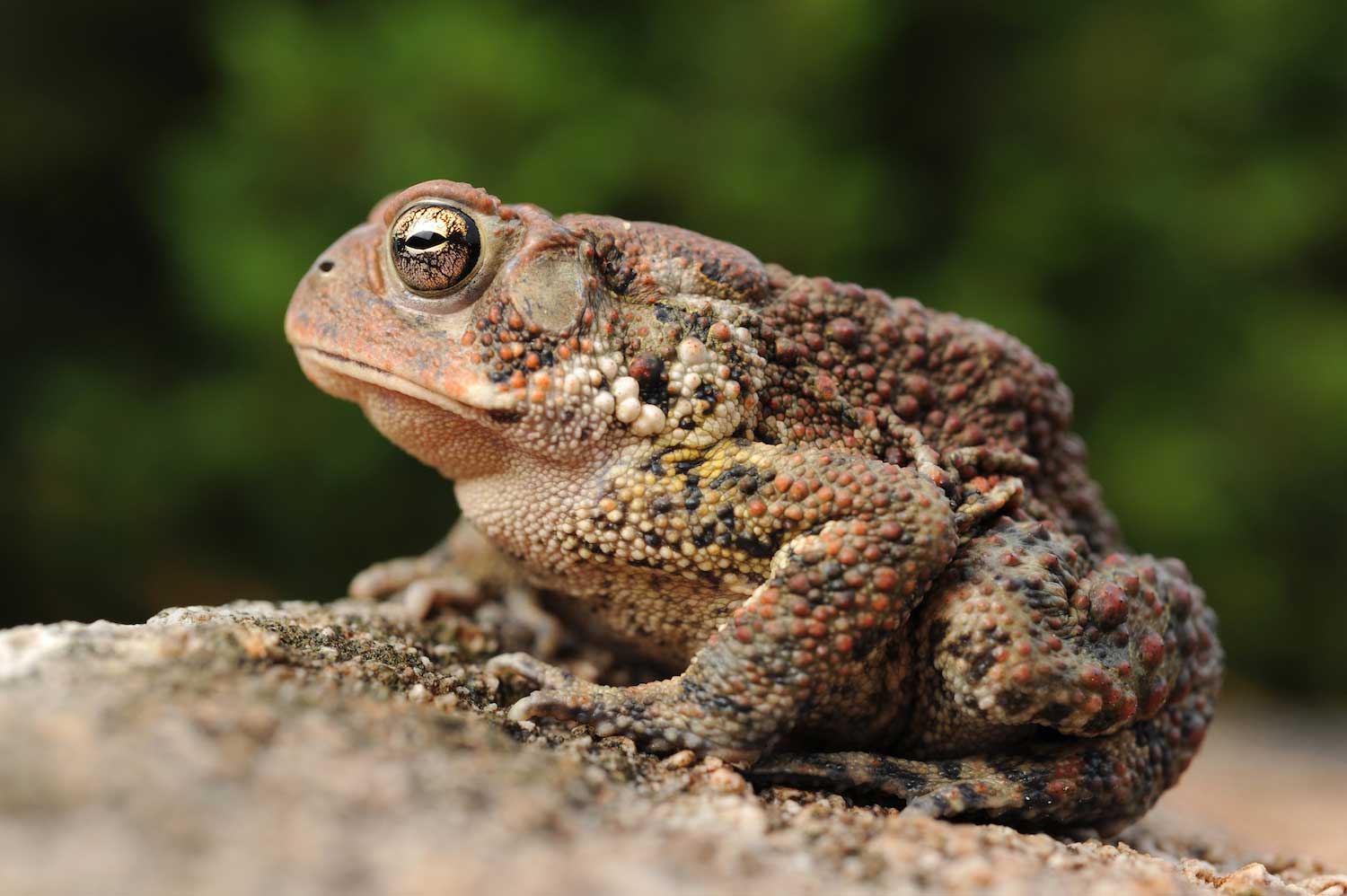Five things about toads, our frogs' lesser-known cousins

What looks a lot like a frog but doesn't jump like a frog or eat like a frog? A toad.
Toads and frogs are both amphibians, and species of both are common in and around Illinois. The two toad species found in Illinois are the American toad and the Fowler's toad, according to the Illinois Department of Natural Resources. Only the American toad lives across most of the state, however. The Fowler's toad's range includes only the southern two-thirds of the state.
American toads can live in a variety of habitats near water, and this can even include your yard. Like most toads, they are nocturnal, according to IDNR. They are dark in color, varying from brown to olive green to gray, and their skin is covered in spots and bumps.
Read on to learn more about toads, including the characteristics that separate them from frogs.
They are frogs, but not all frogs are toads
Frogs and toads are both amphibians, and they are closely related. So closely related that all toads are frogs, but not all frogs are toads. Toads belong to the family Bufonidae, which in taxonomy falls under the order of Anura, or frogs, in the amphibian class, according to Penn State University. So toads are essentially one family of frogs.
Compared to frogs, which mostly live in and near water, adult toads are most often found on land, according to Animal Diversity Web. In addition, toads are noted for their bumpy, warty skin, while most frogs have smooth skin. The bumpy skin most toads have is thought to be the origin of the false notion that touching frogs and toads can give you warts.
One more difference between toads and other frogs is their legs. Frogs are known for their jumping ability and toads are not, and this is because toads aren't as good at jumping. They have shorter legs than frogs, which limits their leaping ability, according to the San Diego Zoo.
They aren't all small
We usually think of toads as smaller than frogs, especially the big bullfrogs that we see around our waterways. Many toads are smaller than our common frogs. Take the American toad, one of the more common and widespread toad species in North America. They are usually between 2 inches and 4 inches long, compared with bullfrogs, which are generally between 4 inches and 8 inches long, according to Animal Diversity Web.
Toads can be both much bigger and much smaller than the American toad, however. Take the oak toad, which lives in the southeastern United States. It reaches a maximum length of about 1.3 inches, according to the National Wildlife Federation. On the upper end of the scale, cane toads, which are native to the Rio Grande Valley in Texas as well as part of Peru and the Amazon rainforest, can grow bigger than the bullfrog, topping out at 9 inches or more.
Toads also have the ability to make themselves look bigger than they are by puffing themselves up. This can be useful for tricking potential predators into thinking they are too big to swallow, the San Diego Zoo reports.
They are poisonous
Another thing that separates toads from other frogs is that all toads have parotoid glands, which are located behind their eyes, and these glands secrete a toxin that makes toads poisonous, the National Wildlife Federation reports. These toxins, called bufotoxins, are an effective defense mechanism for toads because potential predators learn that eating toads can be harmful and make them sick. The toxins can be powerful enough to even kill small animals, and they can cause allergic reactions in humans as well.
Because they are toxic, toads can be problematic for dogs that tend to try to catch anything they see moving on their walks or in their yards. Luckily, most toad species in the United States are only mildly toxic to our dogs, although ingesting or licking a toad can cause dogs to drool, foam at the mouth, paw at the mouth or vomit, according to the American Society for the Prevention of Cruelty to Animals. Two American toad species, the cane toad and Colorado river toad, are more toxic than other species and therefore more dangerous to our dogs, but neither species is native to Illinois.
They catch their food with their tongues
While frogs have teeth, toads do not. So instead of snatching their prey with a powerful bite, toads rely on their long, sticky tongues to catch a meal, according to the American Museum of Natural History. Once they have captured their prey, they swallow it down hole, unable to chew it because they don't have teeth. Their long tongues fold in half when they are being stored in their mouths.
A toad's diet can vary by species, but some will eat just about anything they can fit in their mouths and swallow. Most toads eat a lot of insects and arthropods, but other food items include reptiles, amphibians, small birds and small mammals, according to the National Wildlife Federation.
They sing
Frogs are known for their ribbiting call, although that ribbit is not universal among frogs. However, toads don't ribbit. Instead, they sing, and each species has its own distinct calling sound, the National Wildlife Federation reports. Like other animals that sing, the main purpose of the melody is to help males attract a mate. They also sing to establish and defend their territory.
Once a male has attracted a female mate, the female releases the eggs and the male fertilizes them. Although toads are typically more terrestrial than frogs, they lay their eggs in water like all amphibians do. The eggs hatch into tadpoles with tails and gills and then eventually develop into adult toads and transition to spending most of their time on land.
